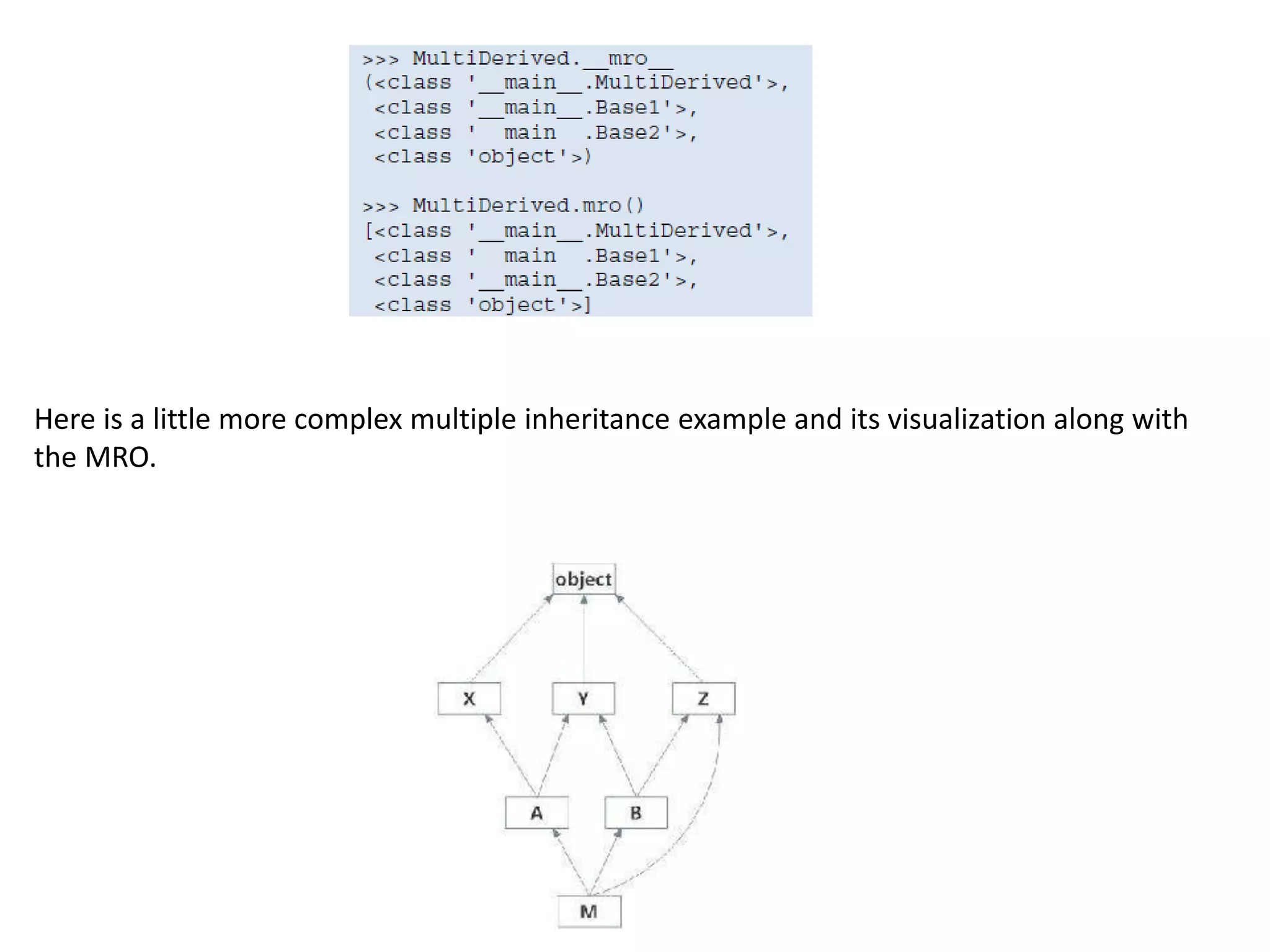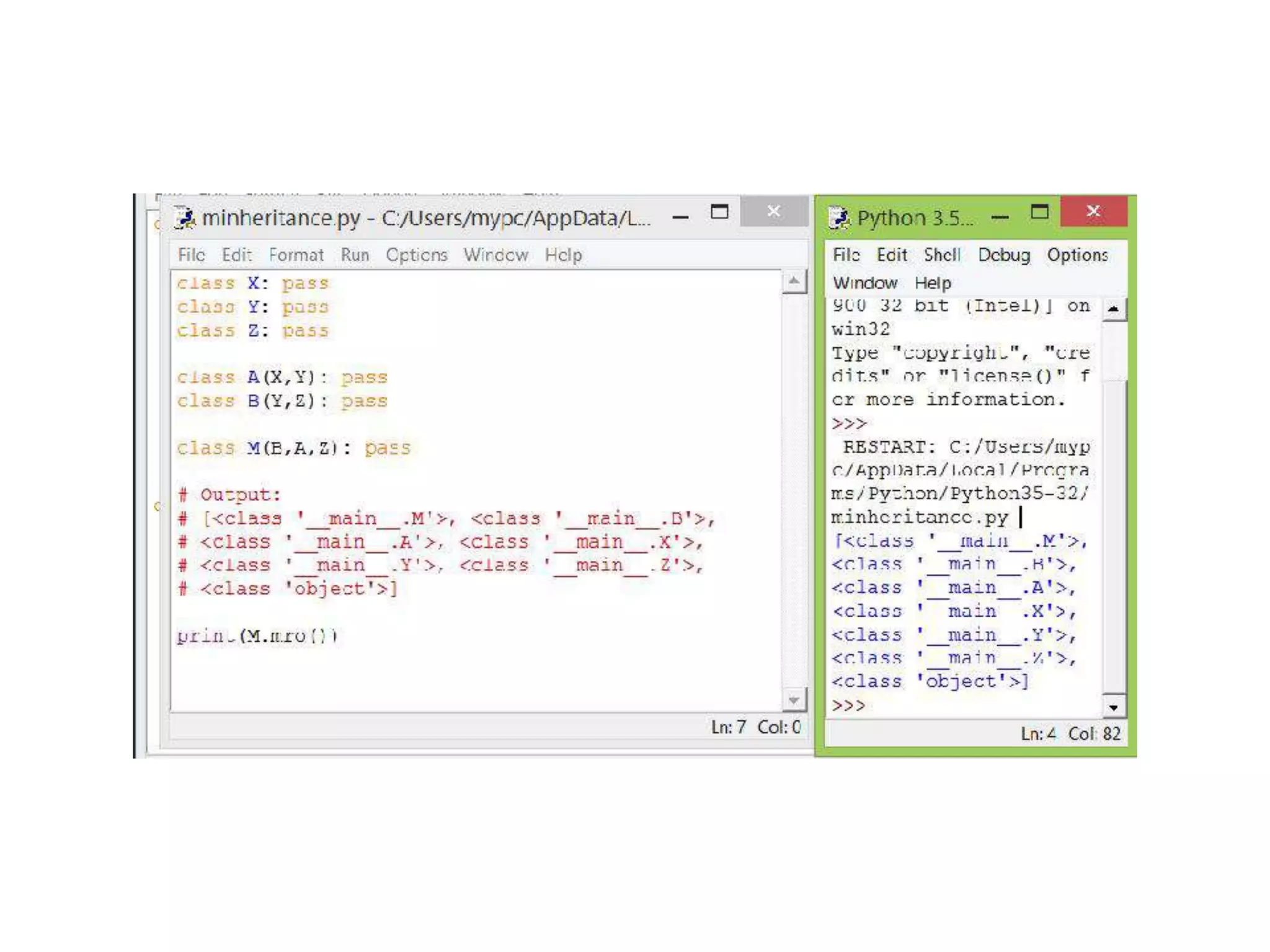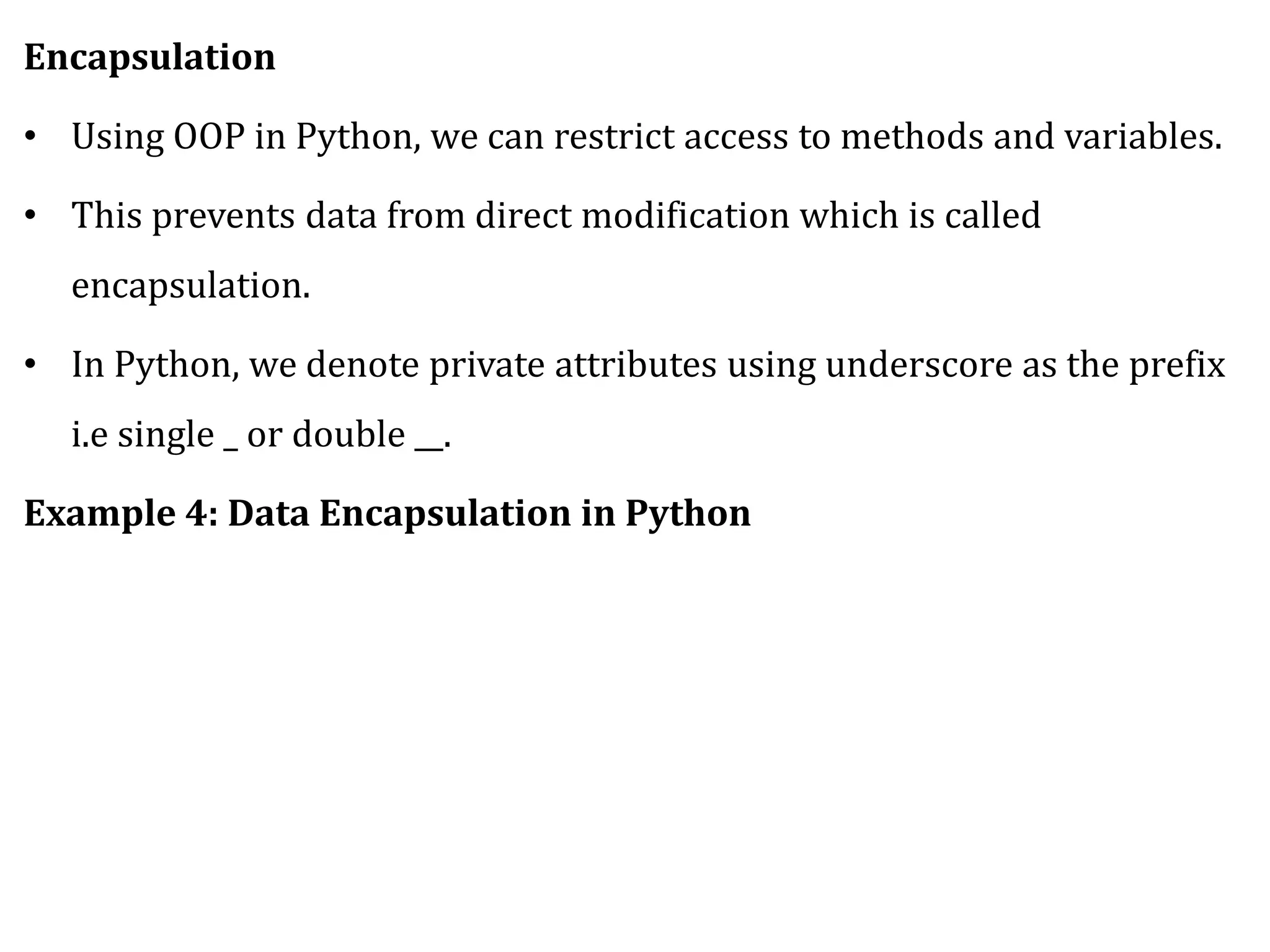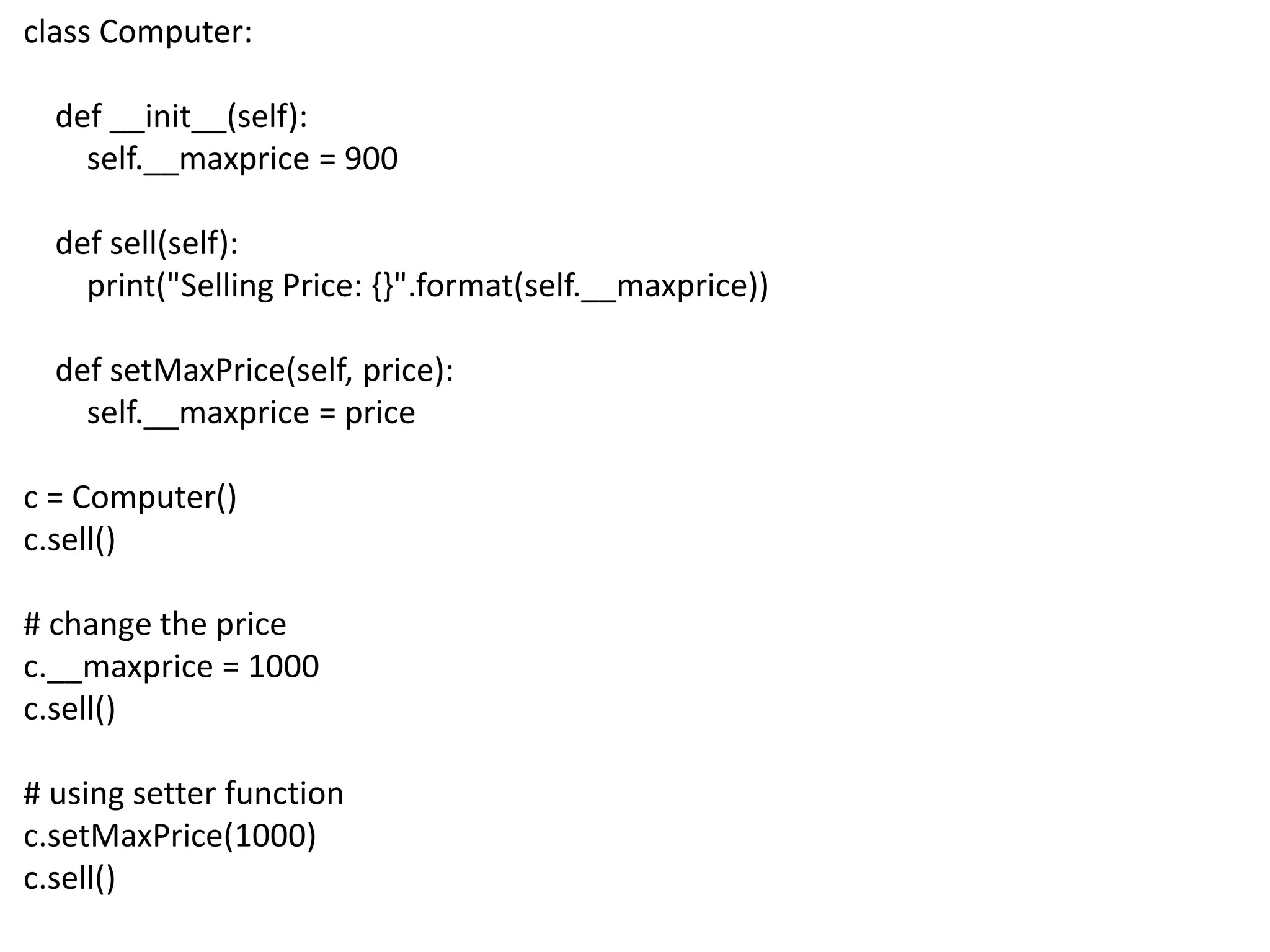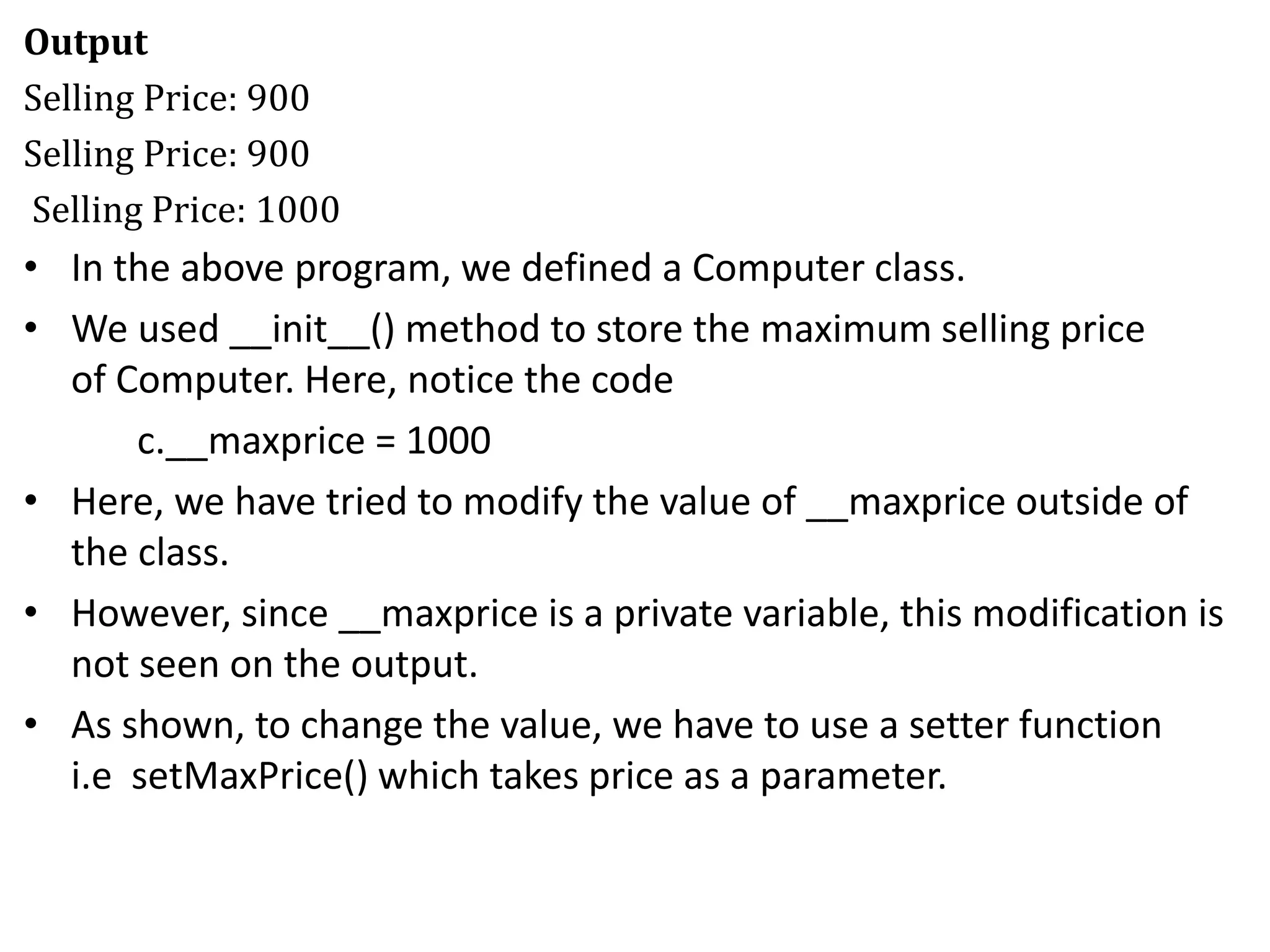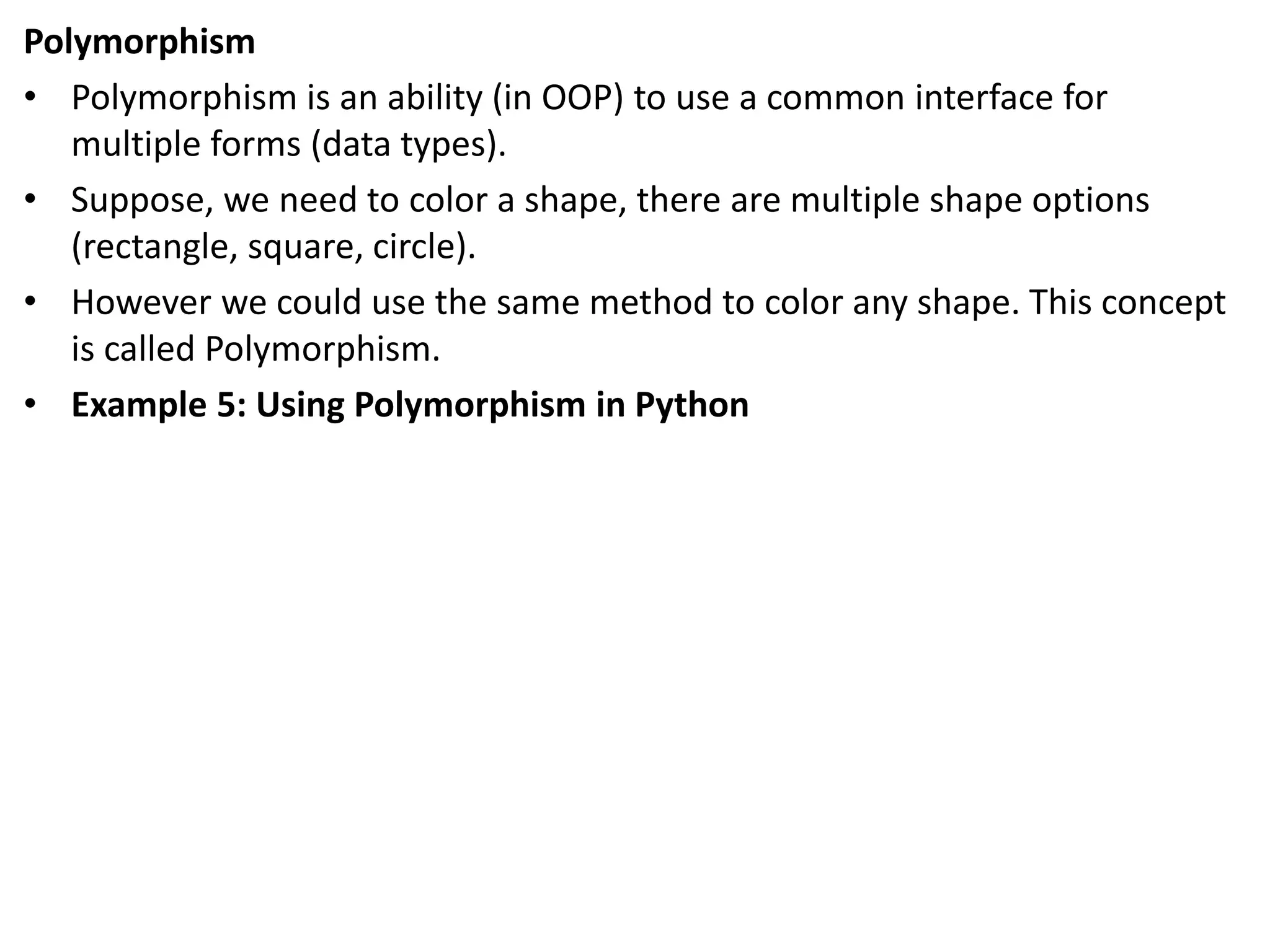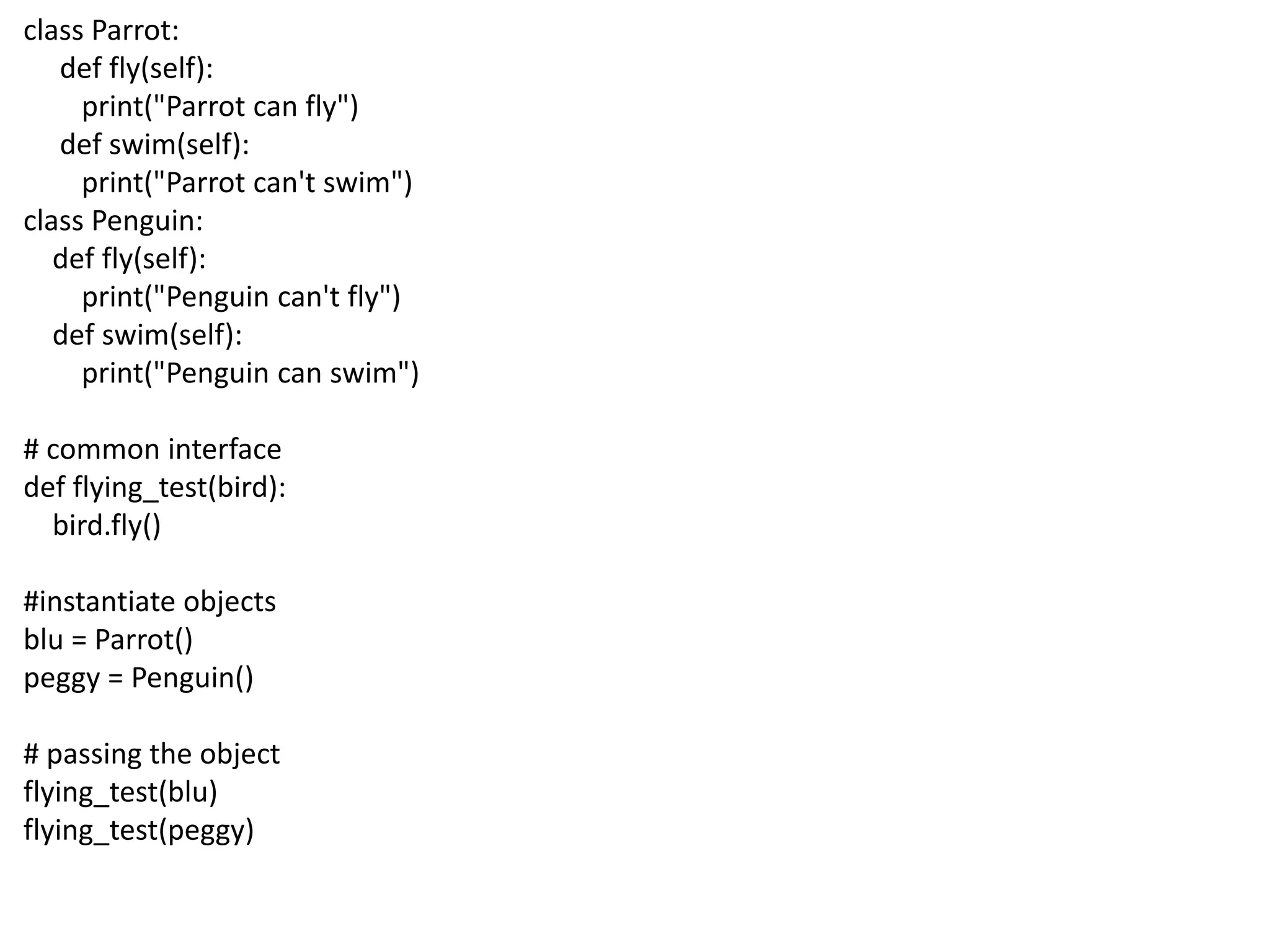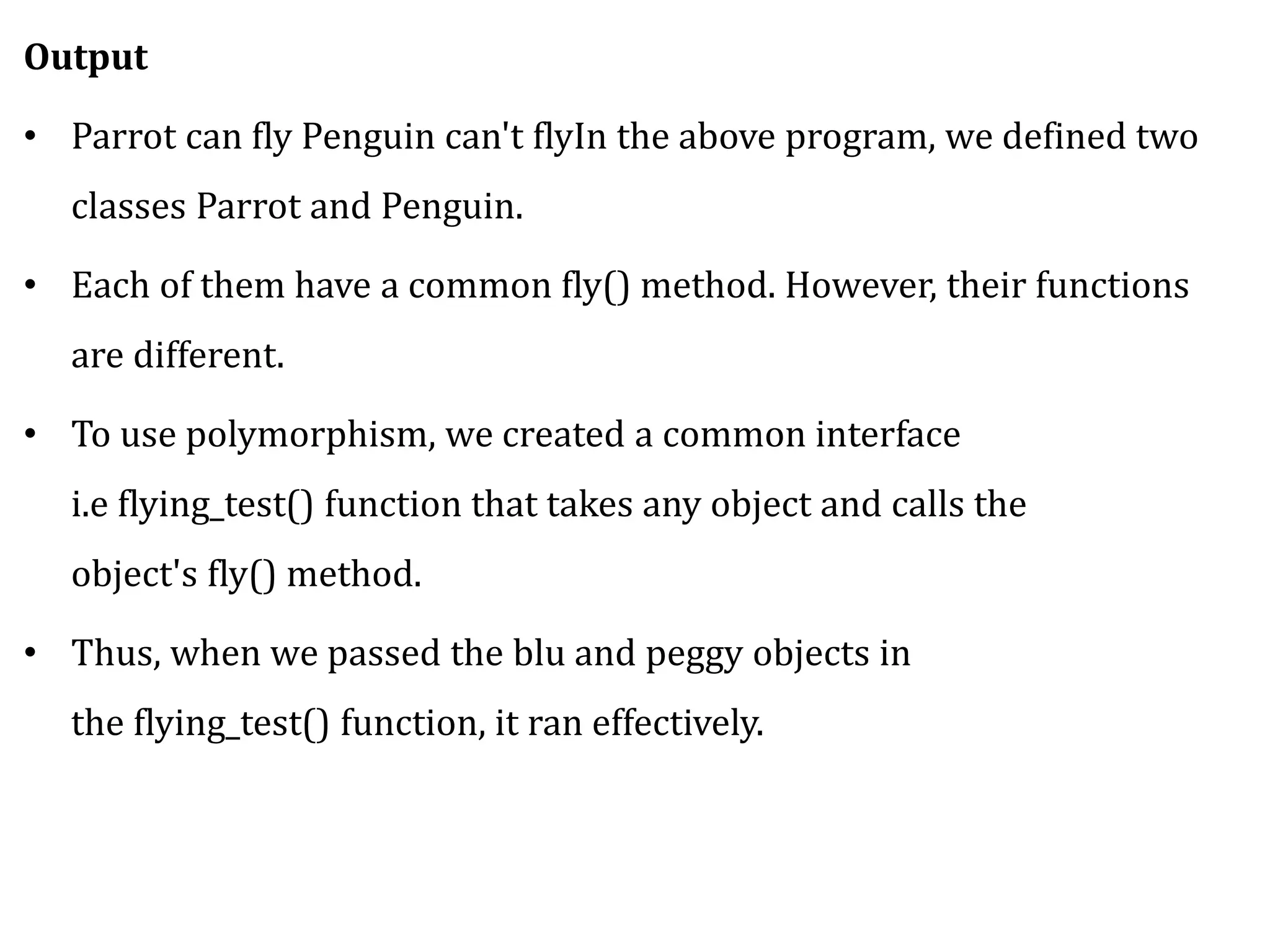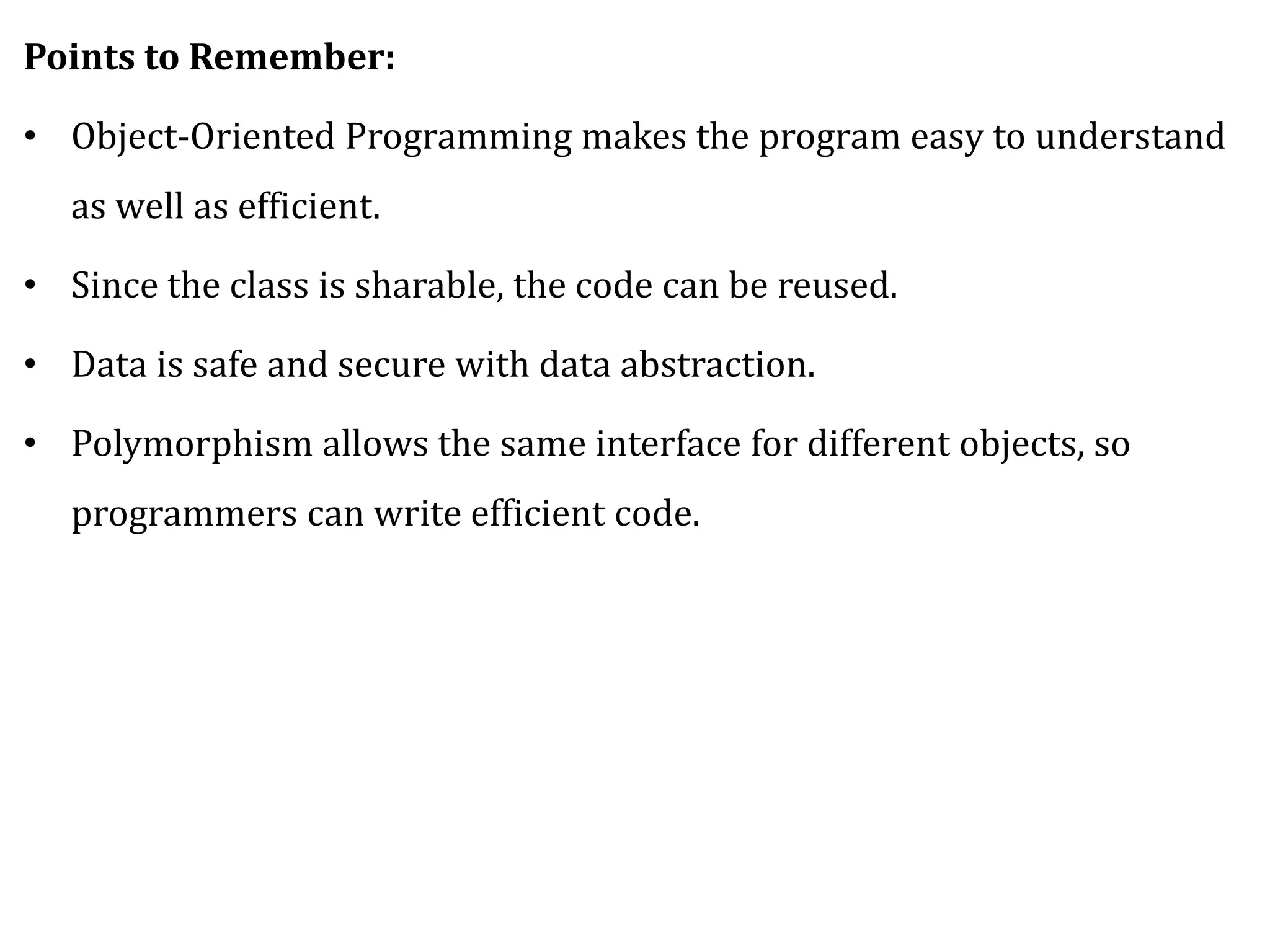Python supports object-oriented programming through classes, objects, and related concepts like inheritance, polymorphism, and encapsulation. A class acts as a blueprint to create object instances. Objects contain data fields and methods. Inheritance allows classes to inherit attributes and behaviors from parent classes. Polymorphism enables the same interface to work with objects of different types. Encapsulation helps protect data by restricting access.
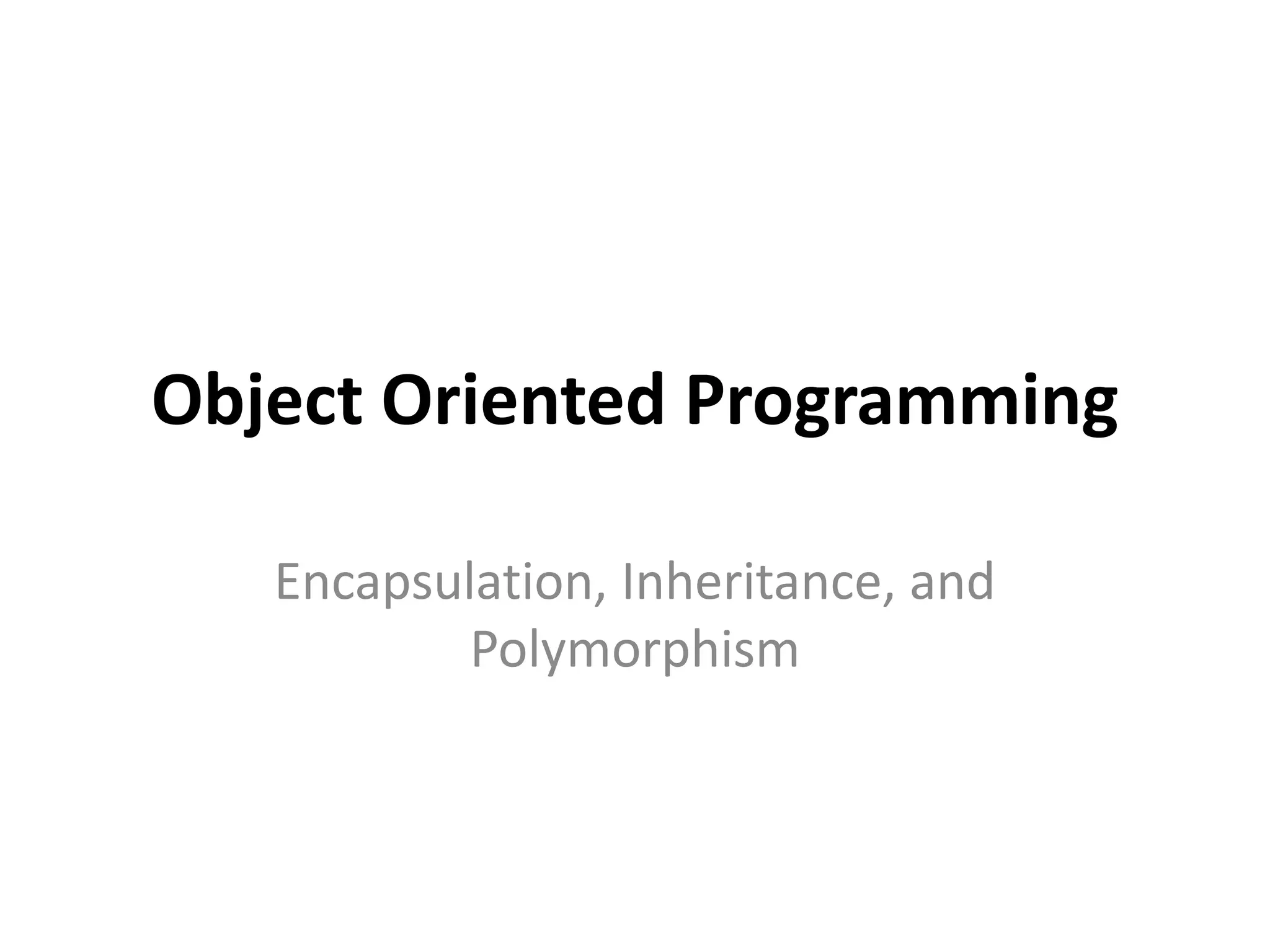
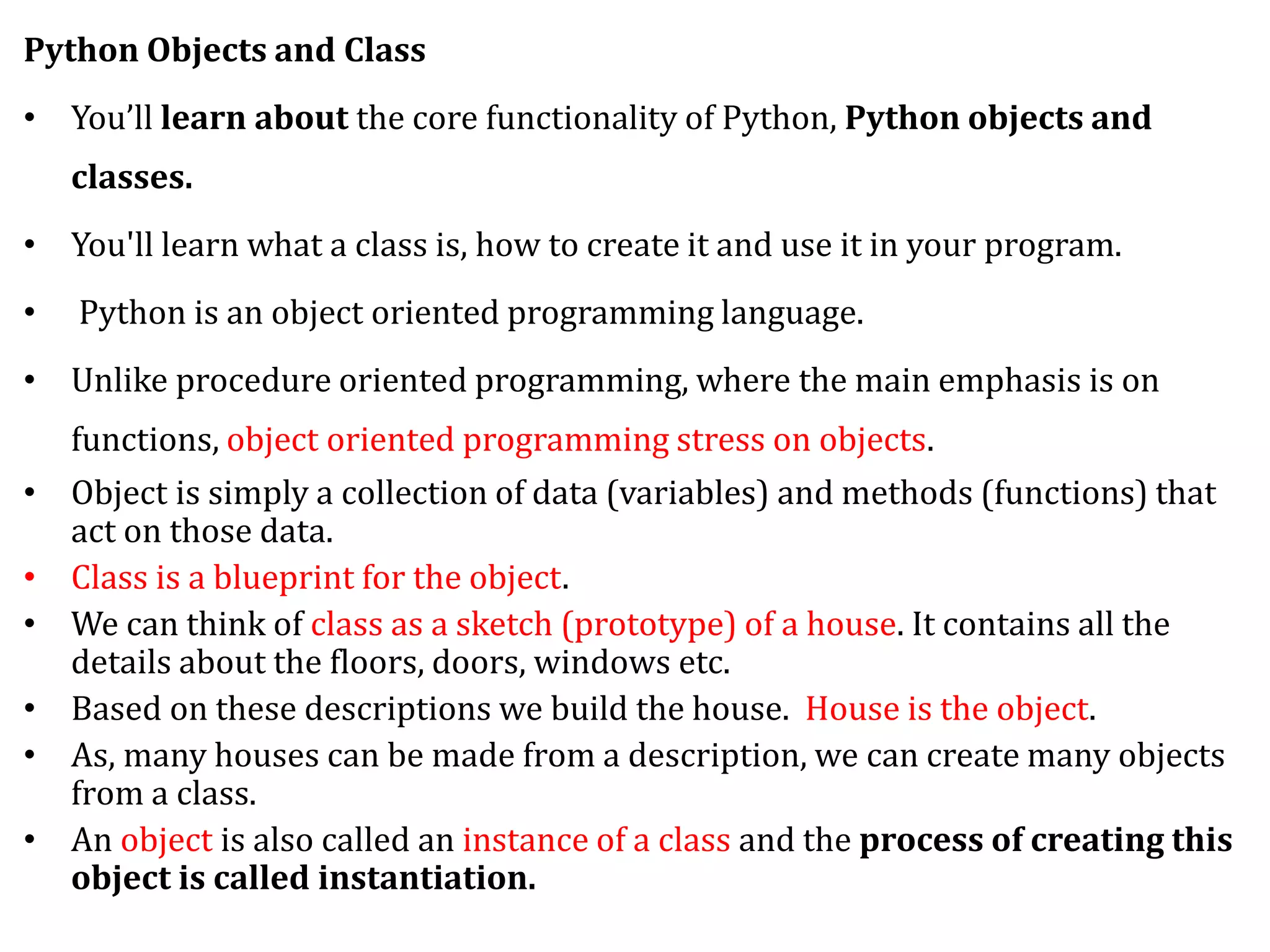


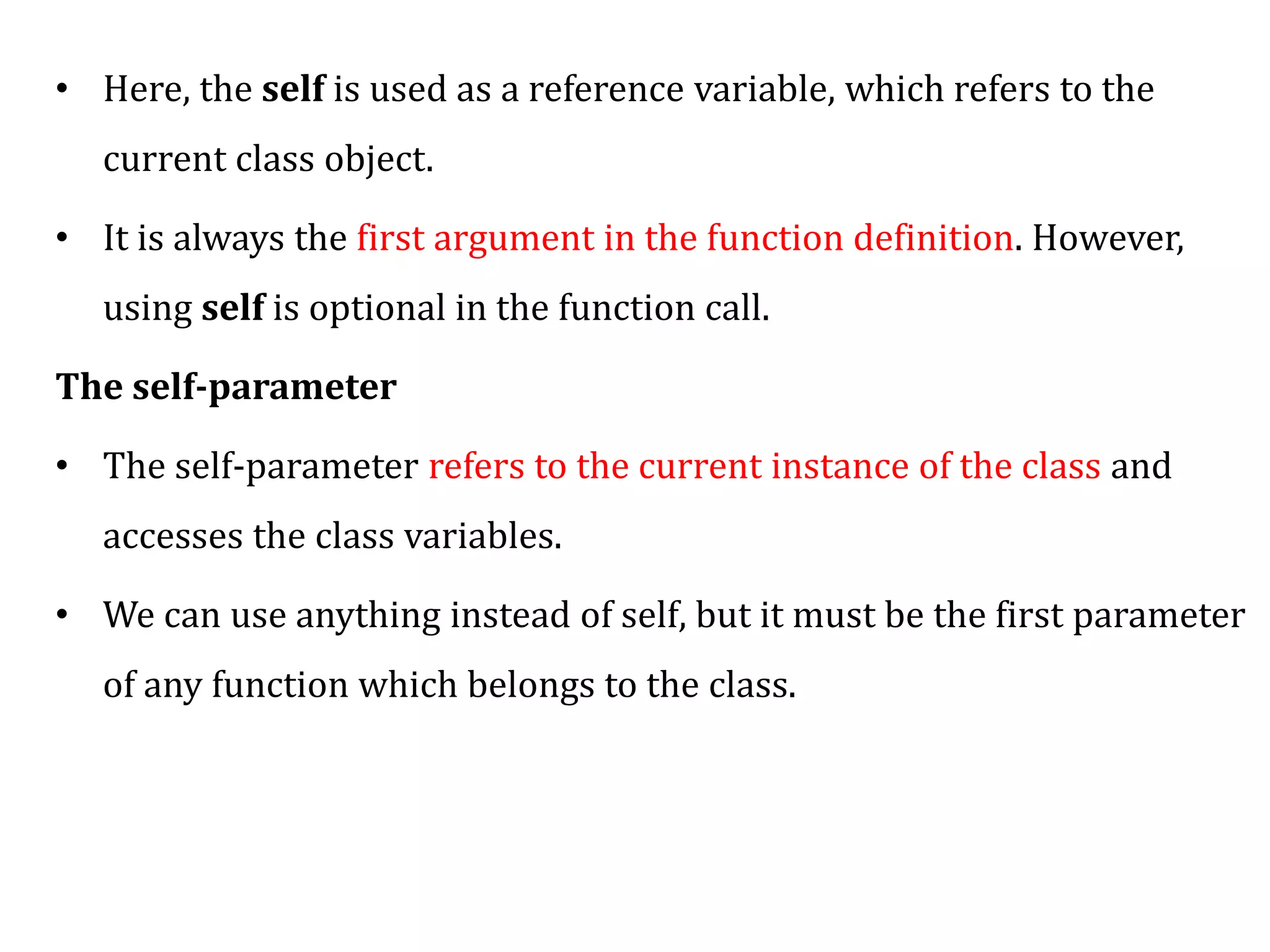
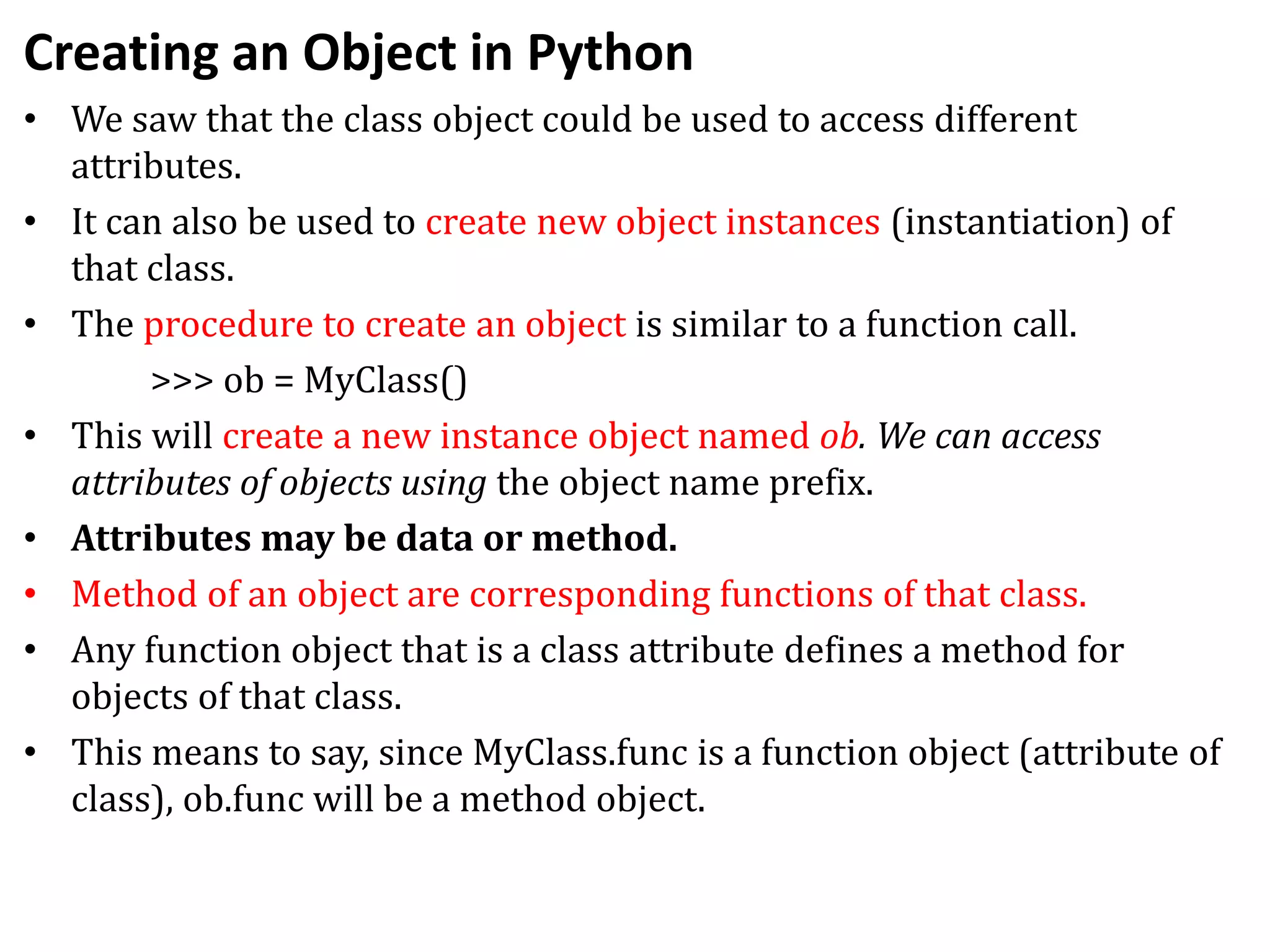
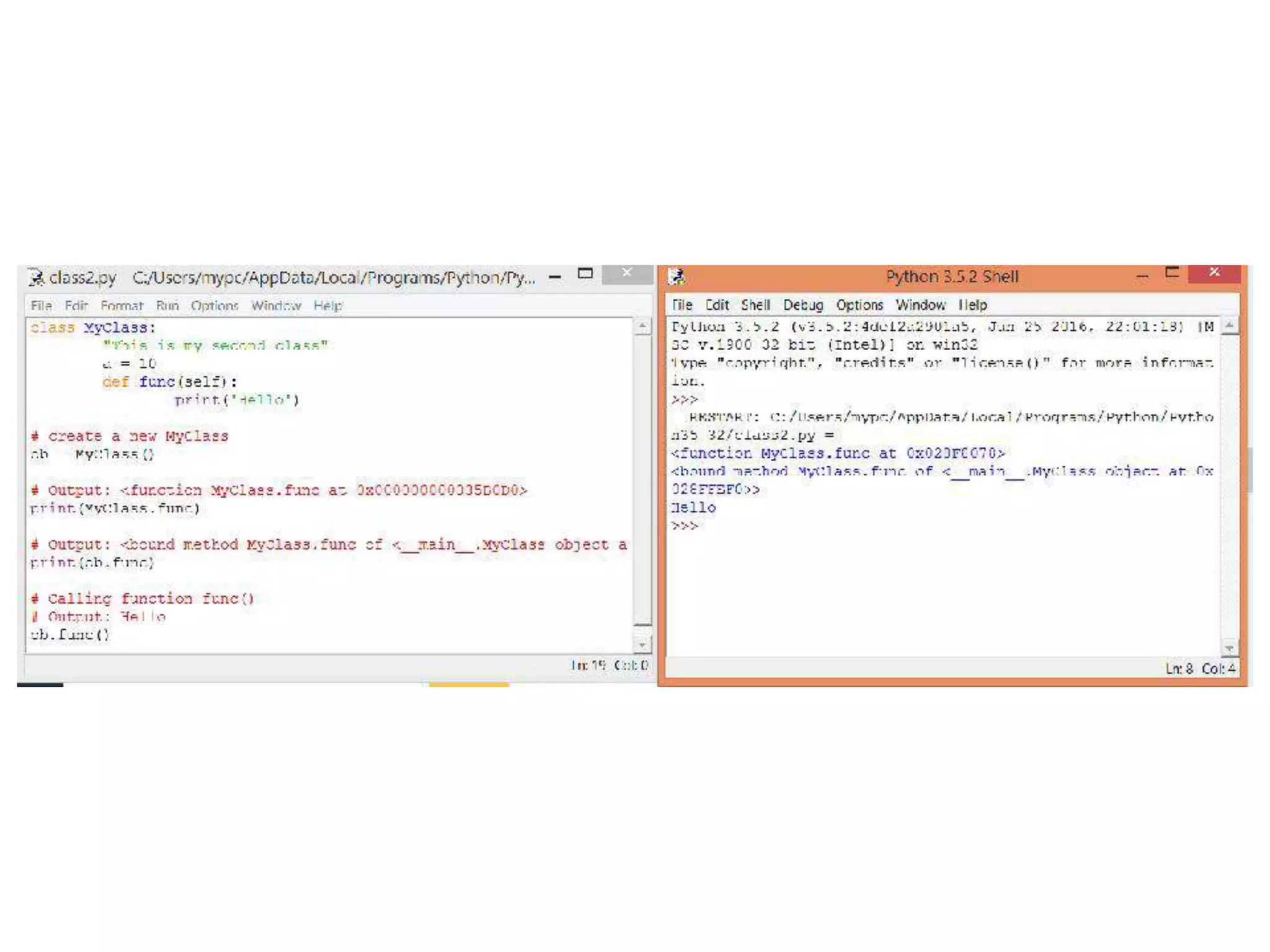
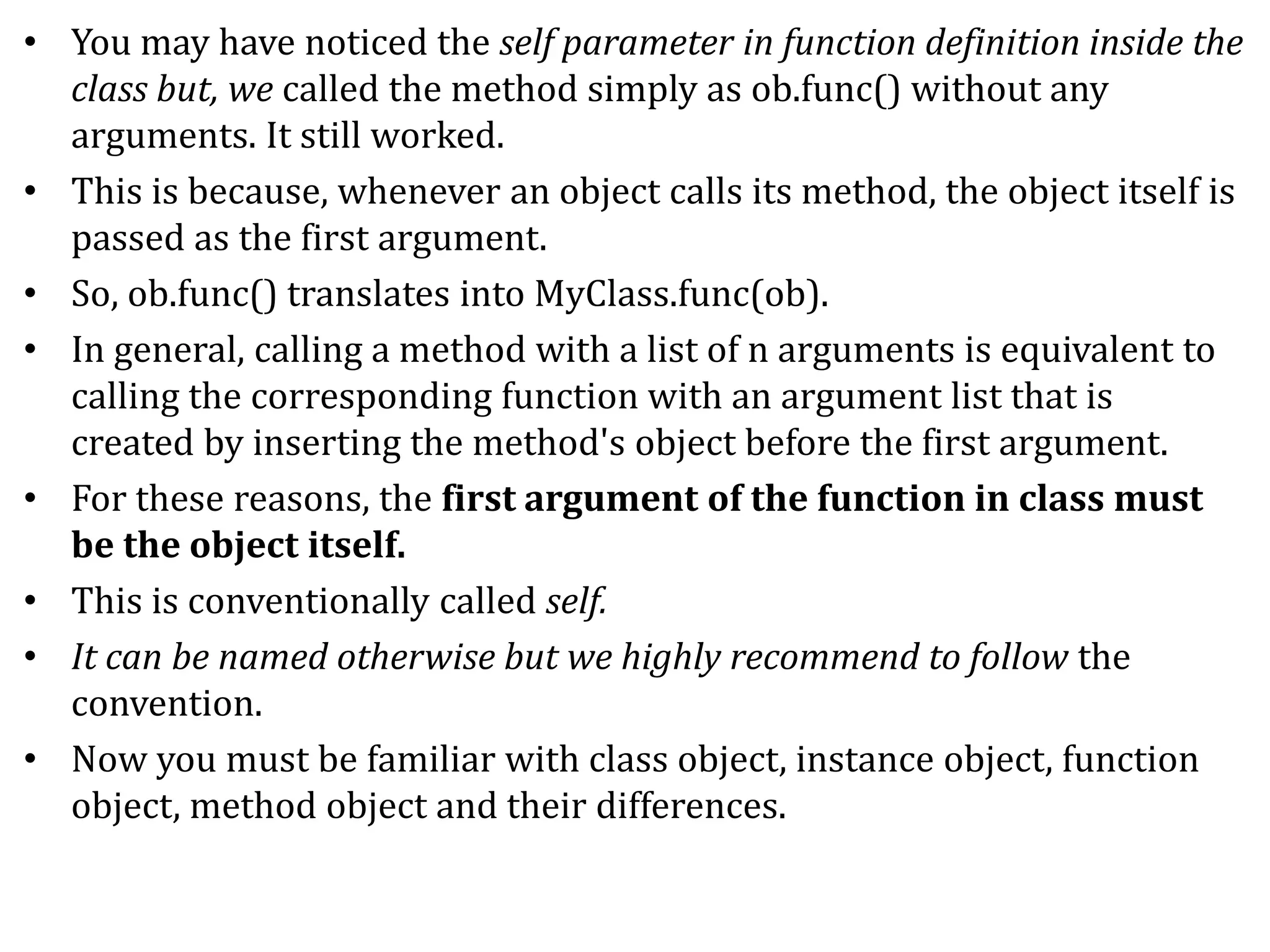

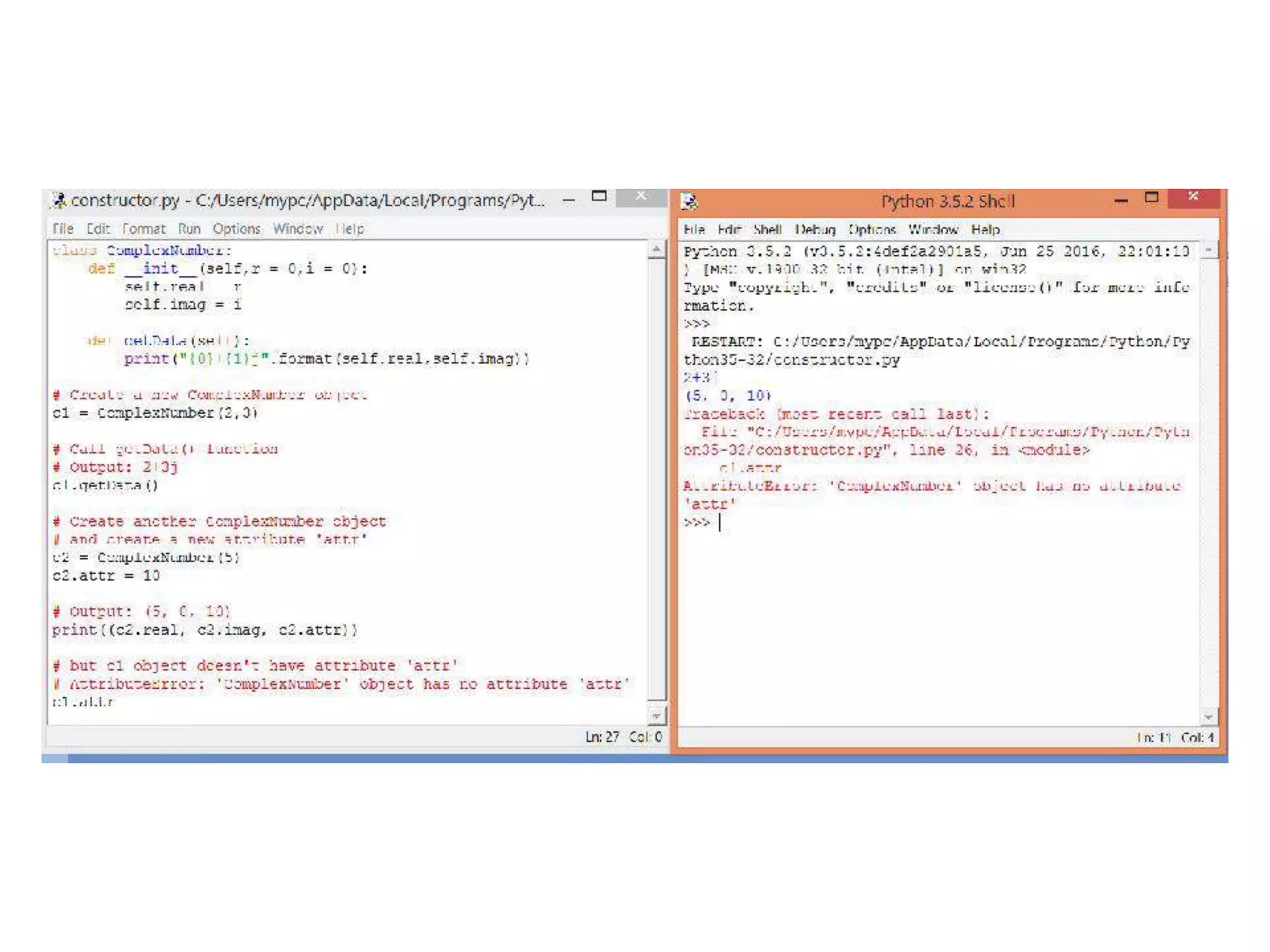
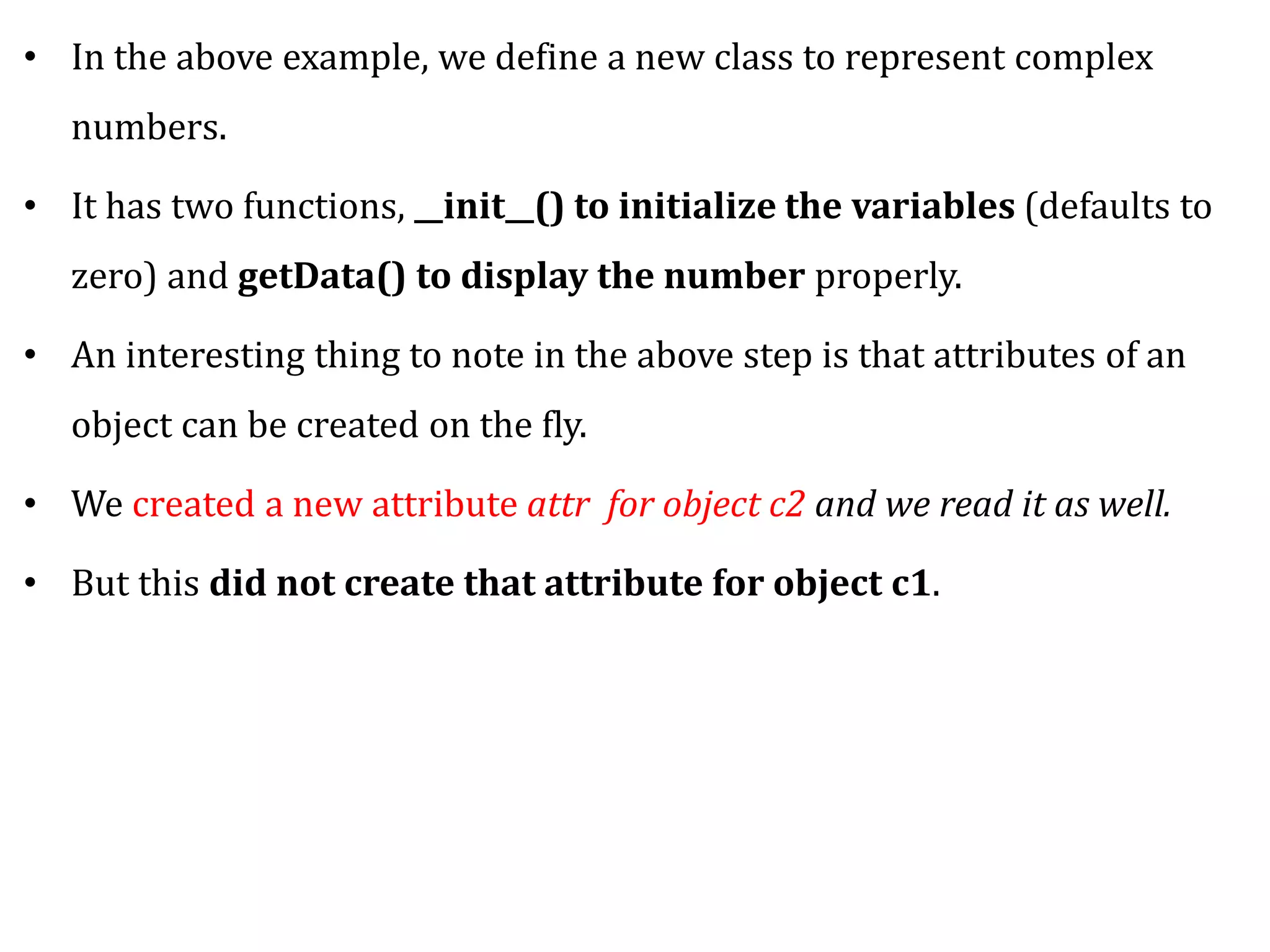
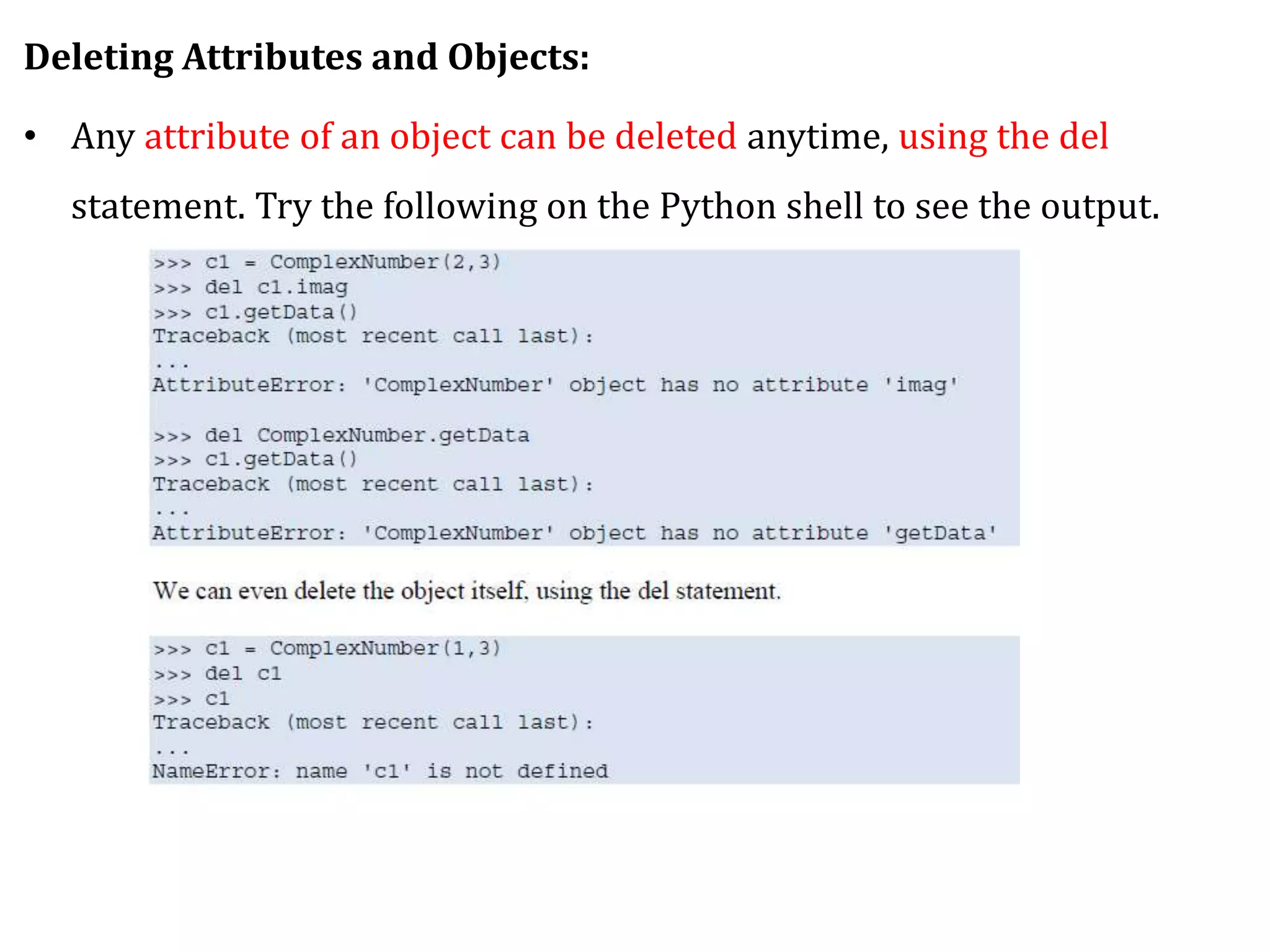
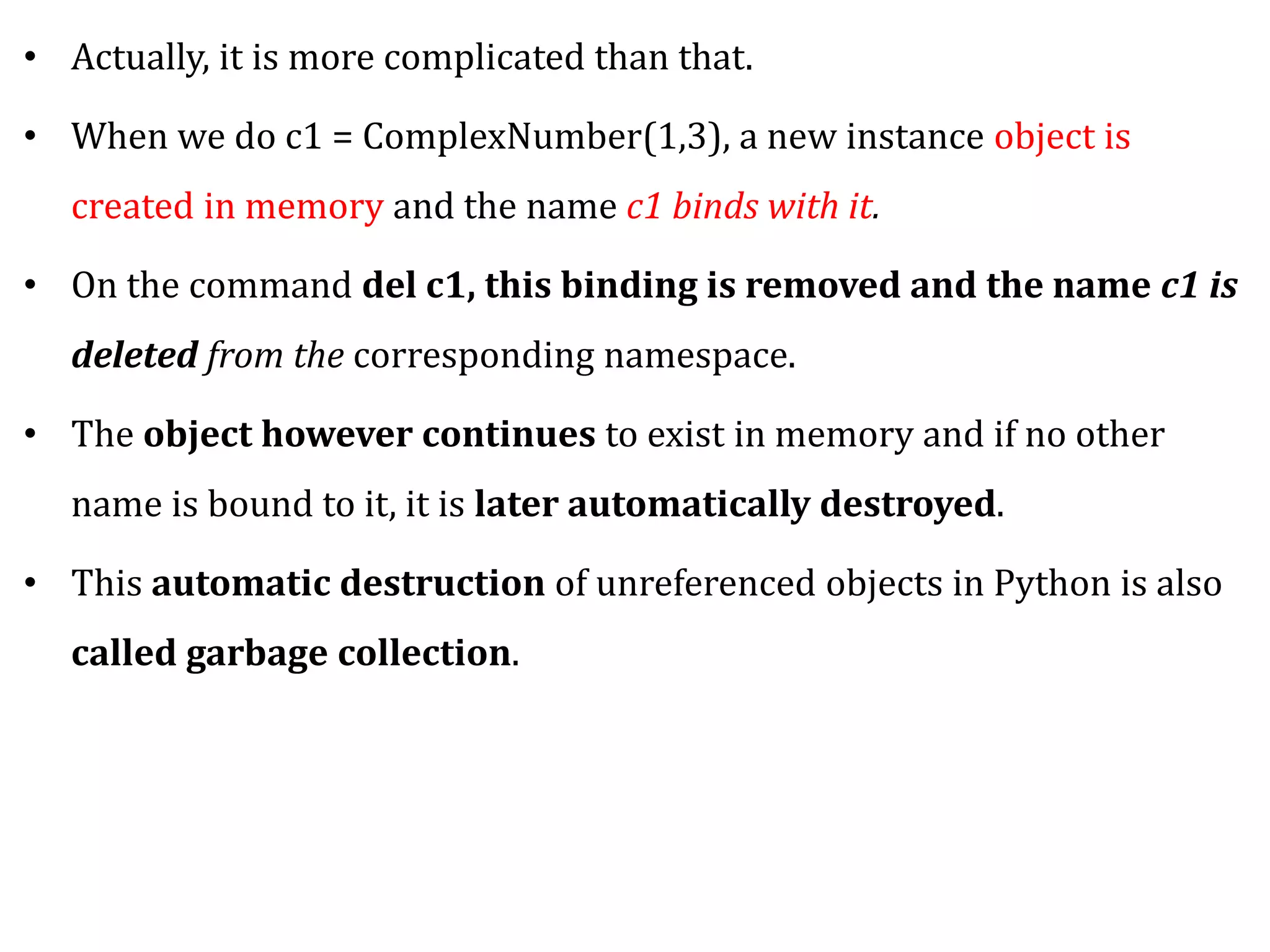
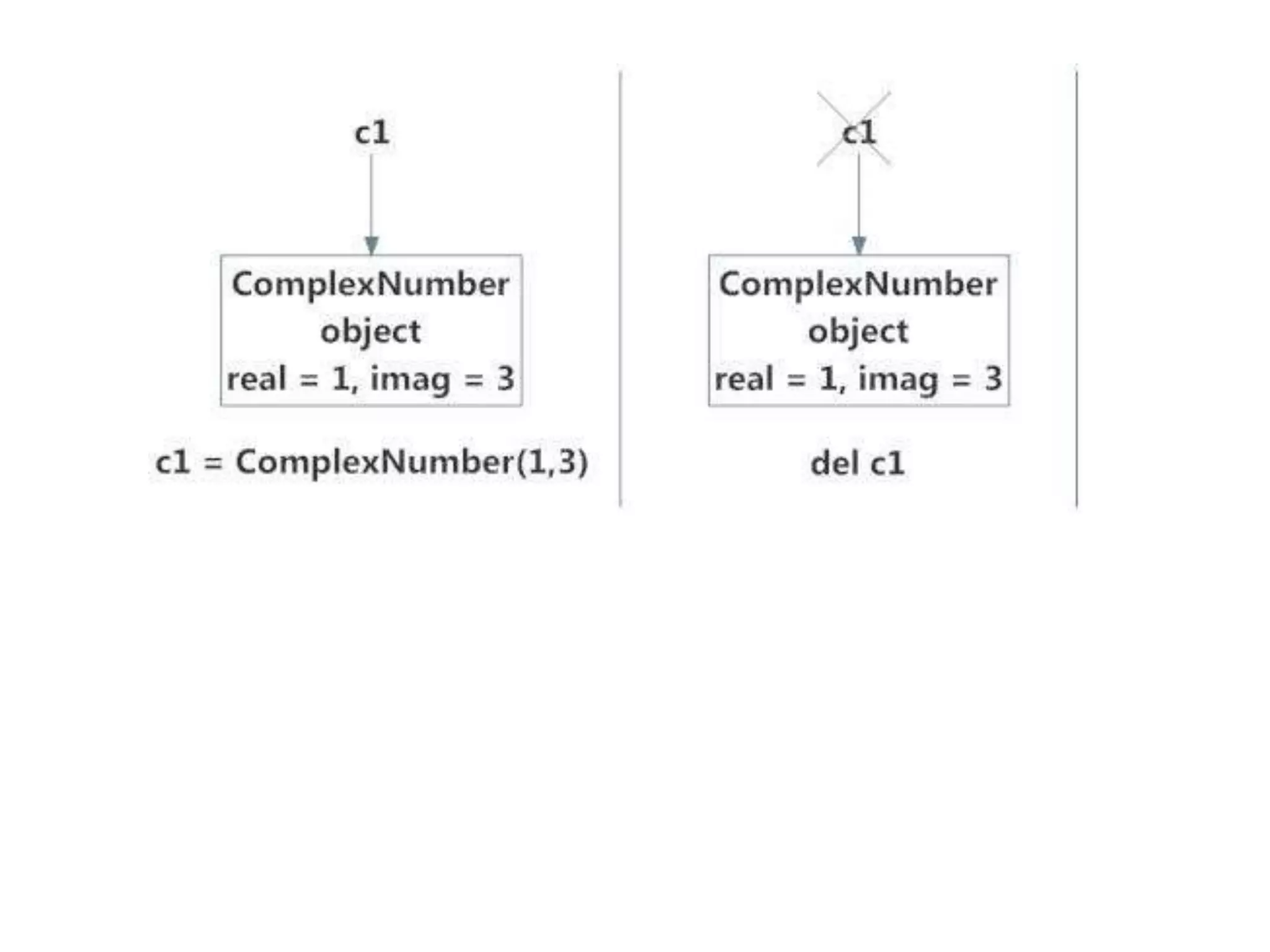
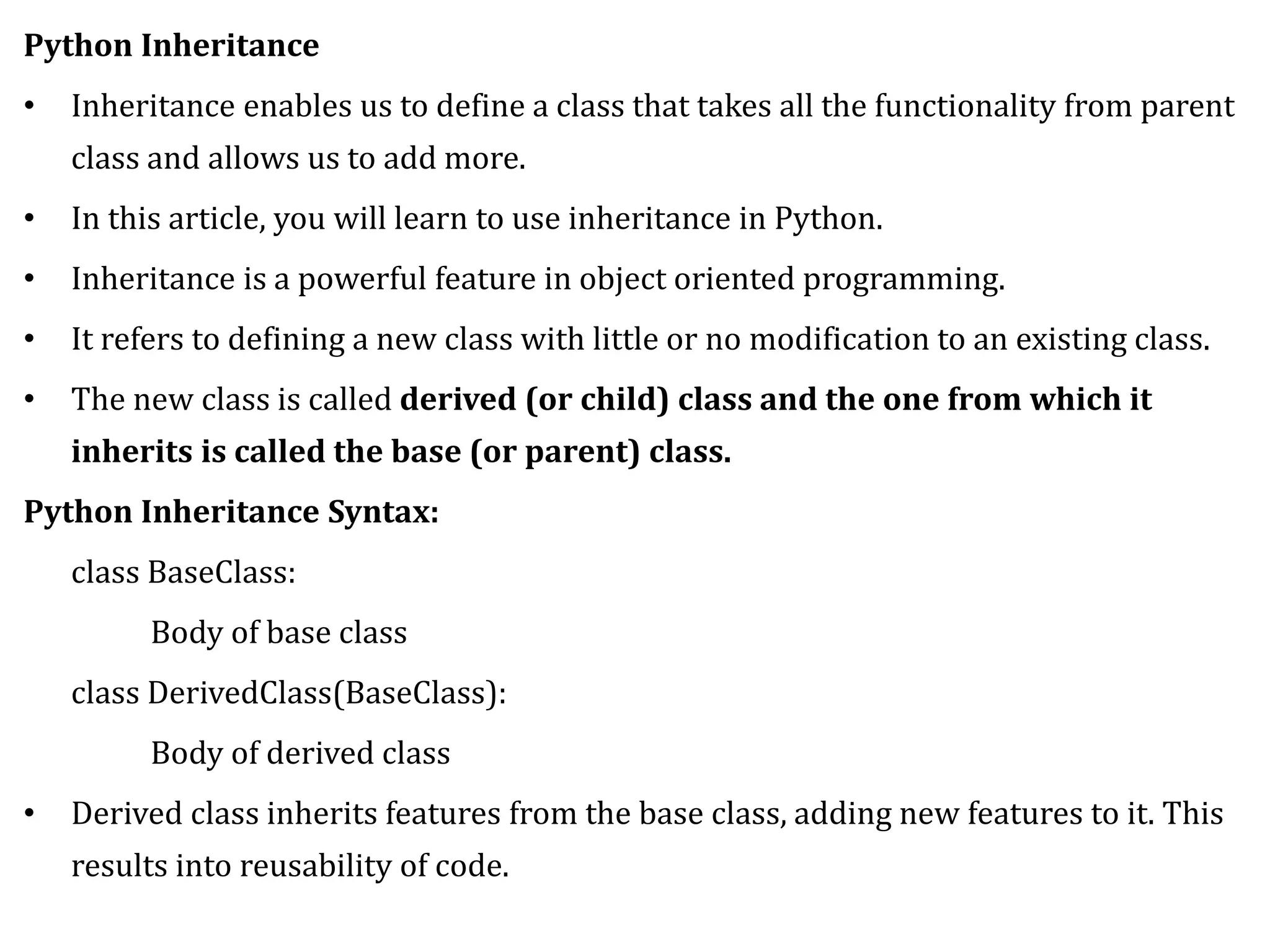
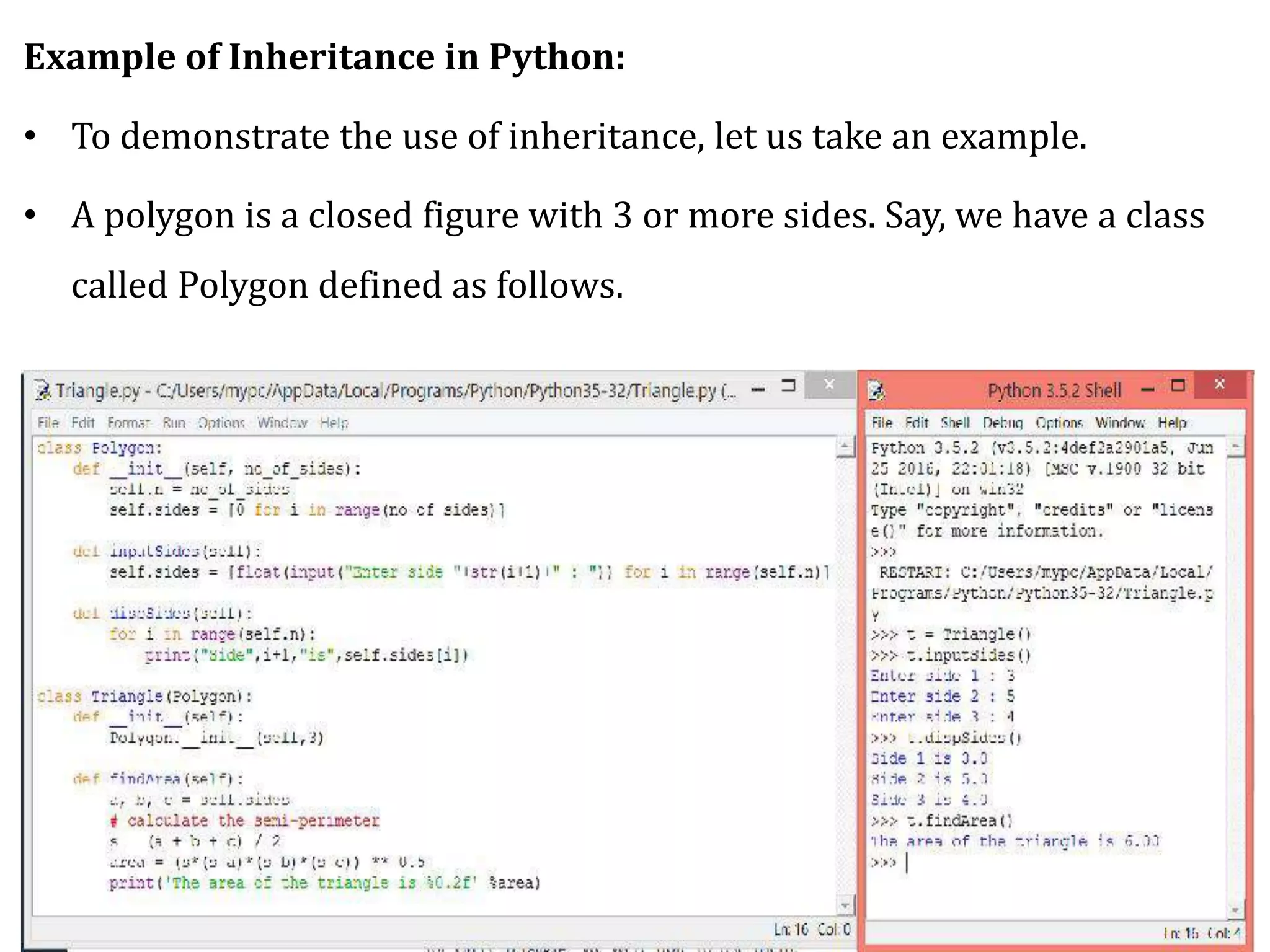



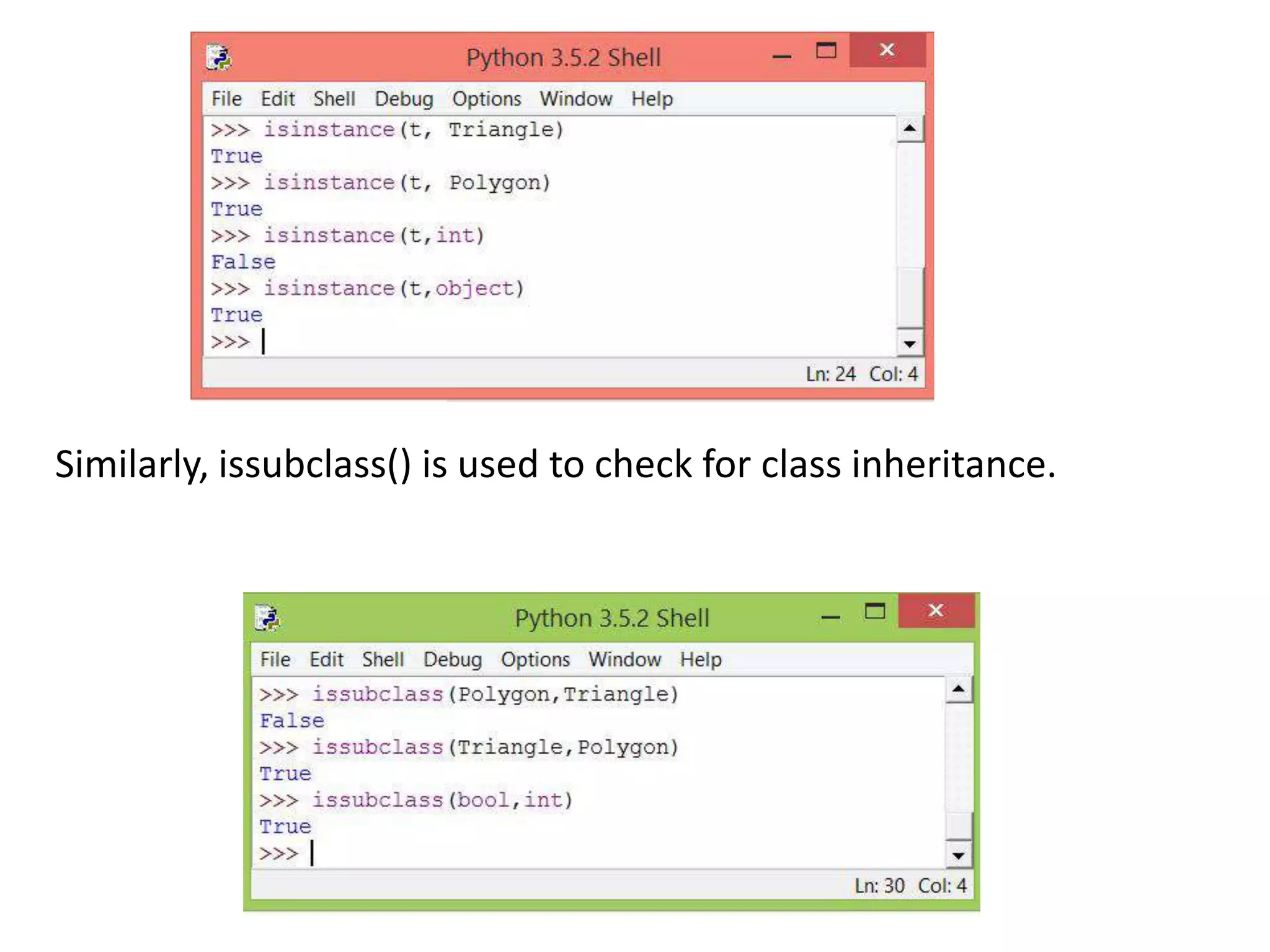
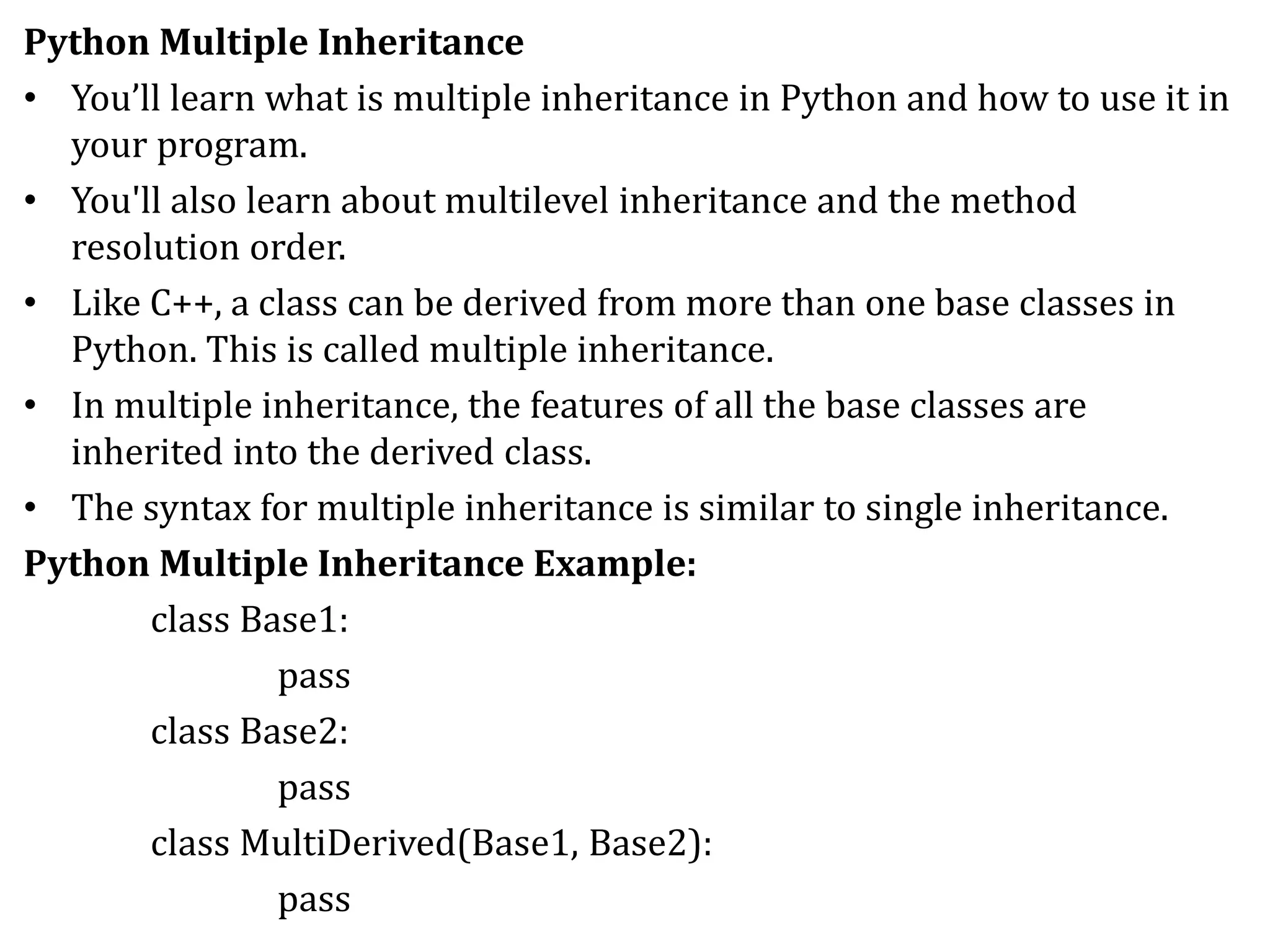
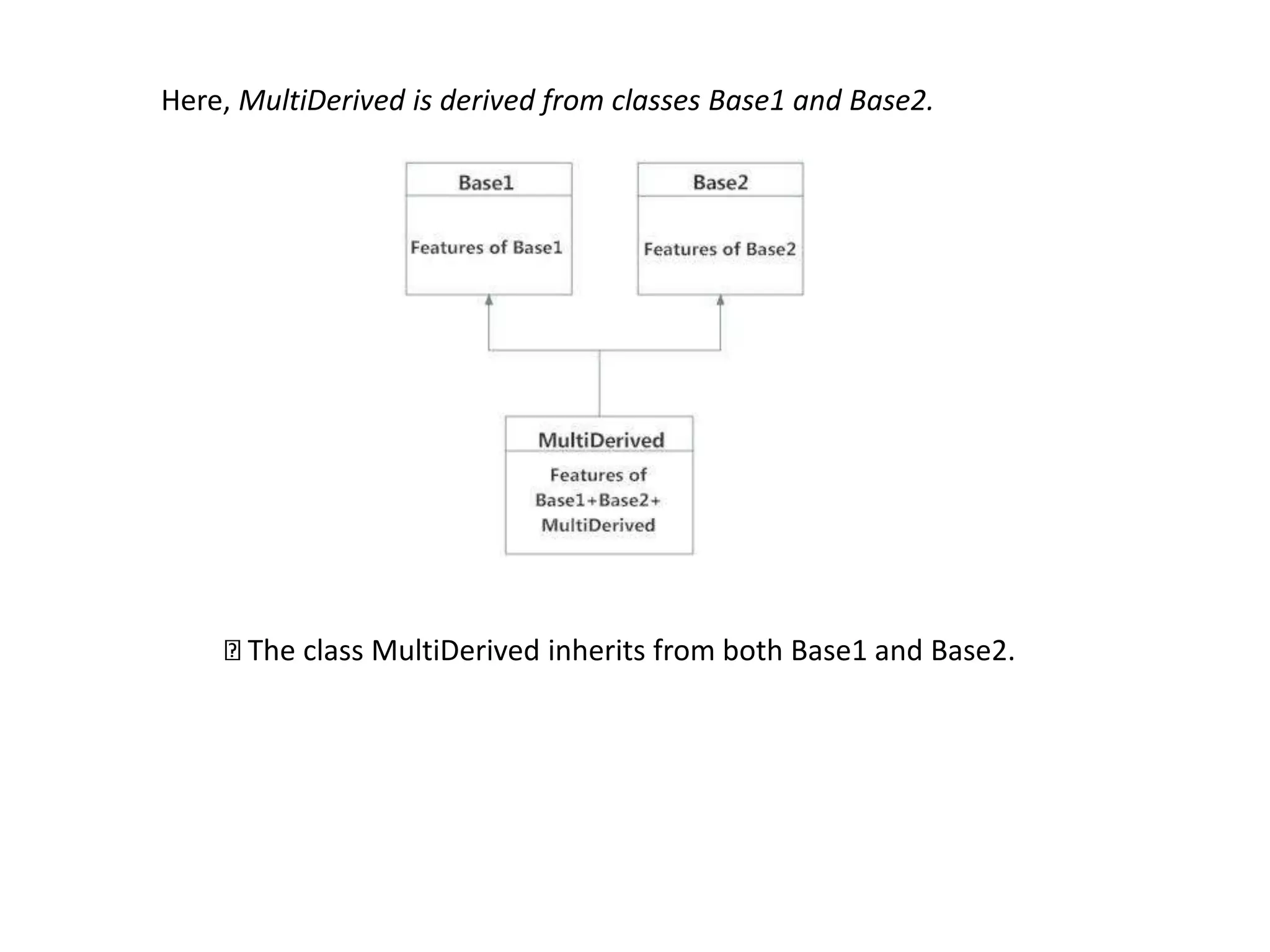
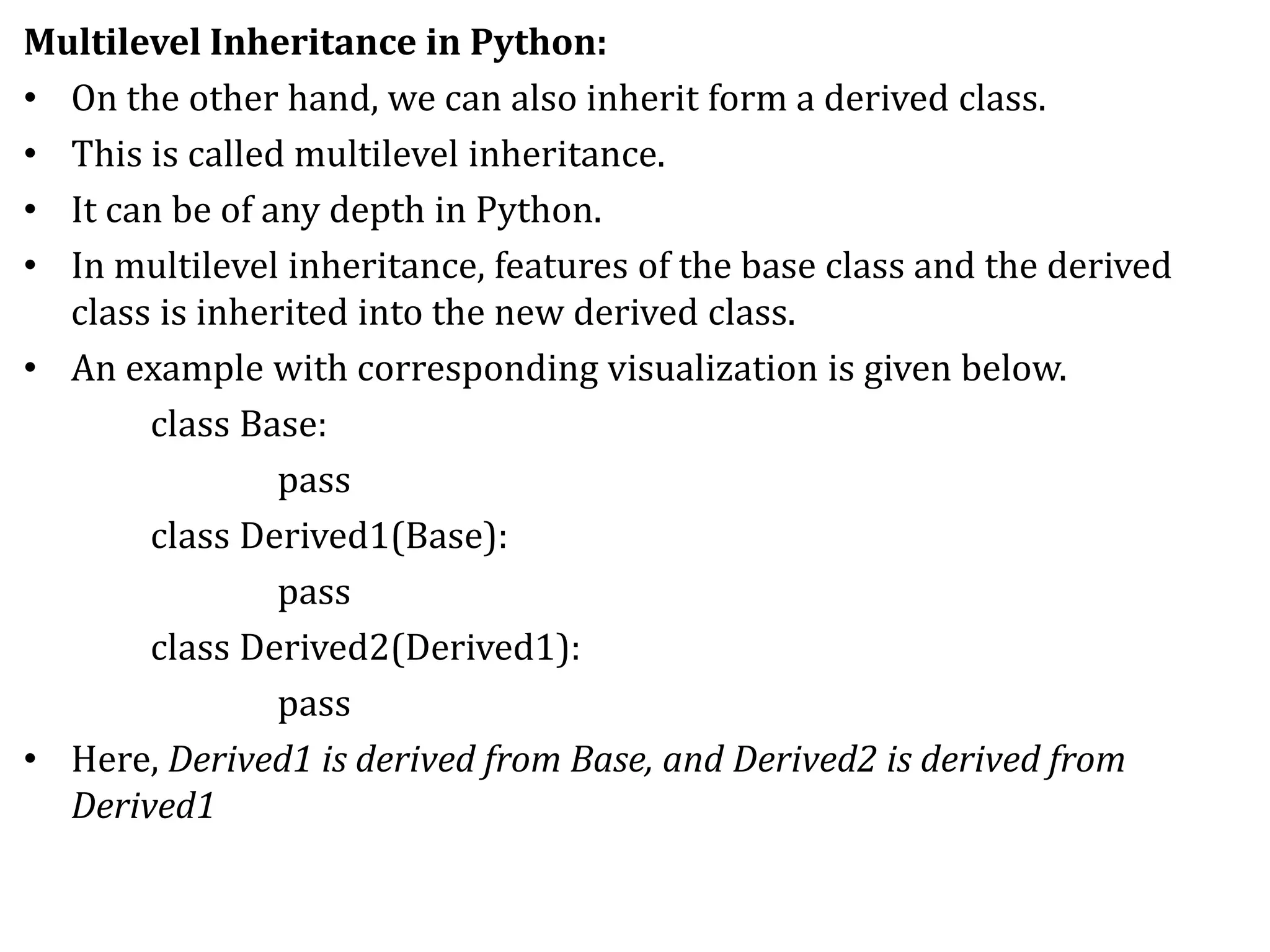
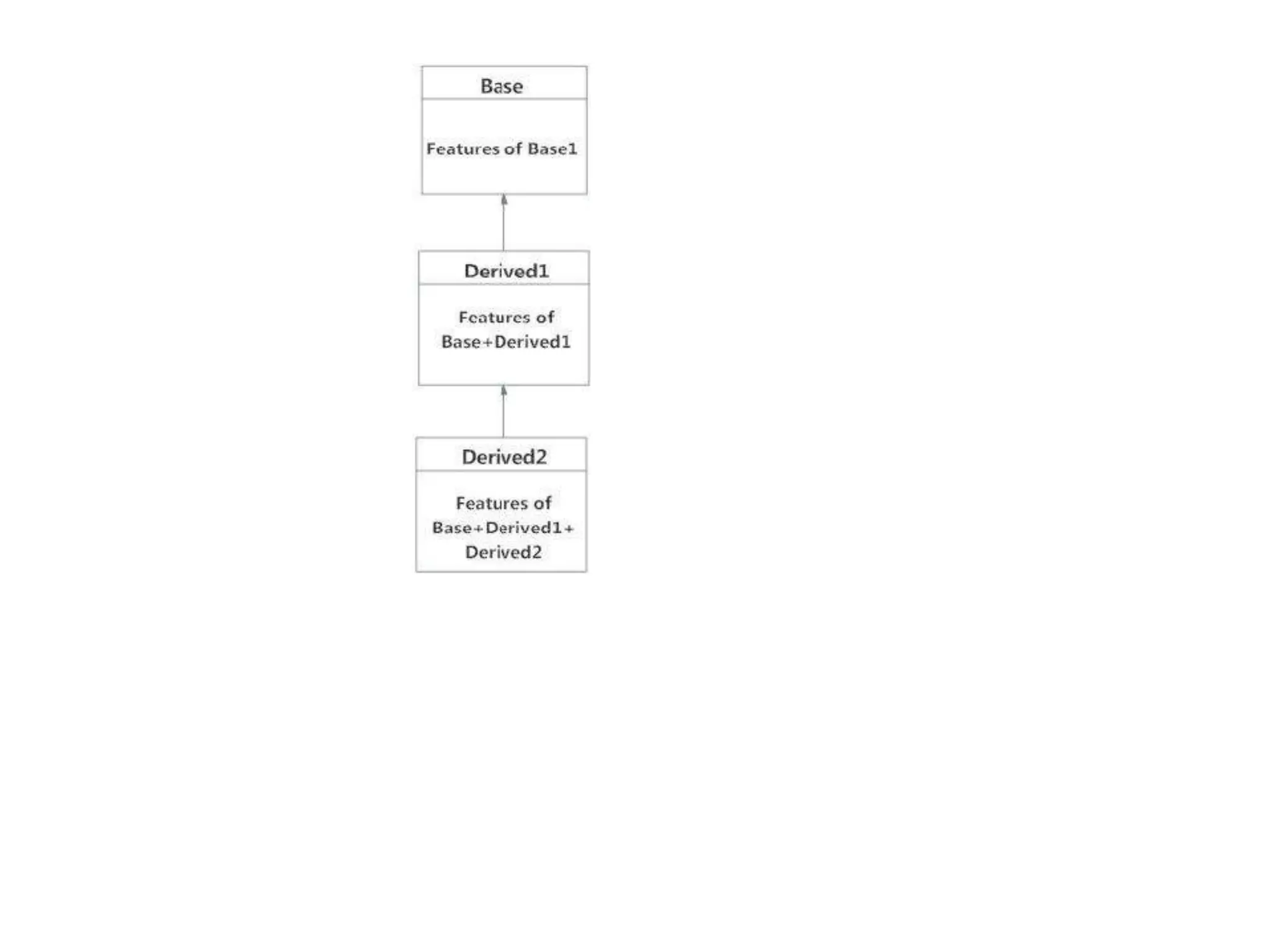
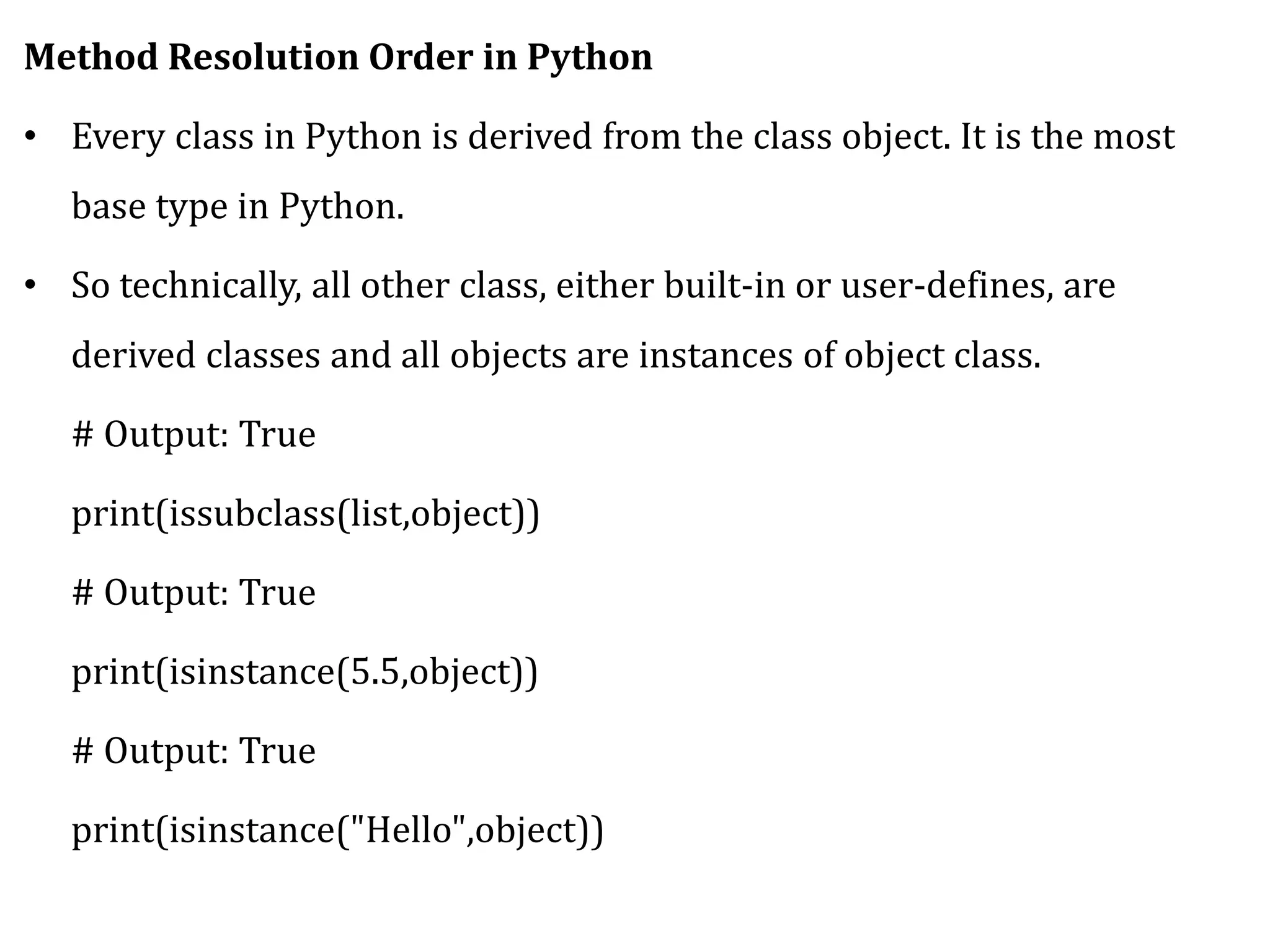
![• In the multiple inheritance scenario, any specified attribute is searched first in
the current class.
• If not found, the search continues into parent classes in depth-first, left-right
fashion without searching same class twice.
• So, in the above example of MultiDerived class the search order is
[MultiDerived, Base1, Base2, object].
• This order is also called linearization of MultiDerived class and the set of rules
used to find this order is called Method Resolution Order (MRO).
• MRO must prevent local precedence ordering and also provide monotonicity.
• It ensures that a class always appears before its parents and in case of
multiple parents, the order is same as tuple of base classes.
• MRO of a class can be viewed as the __mro__ attribute or mro() method. The
former returns a tuple while latter returns a list](https://image.slidesharecdn.com/objectorientedprogramming-221012062348-1c3eb7e7/75/Object-Oriented-Programming-pptx-26-2048.jpg)
